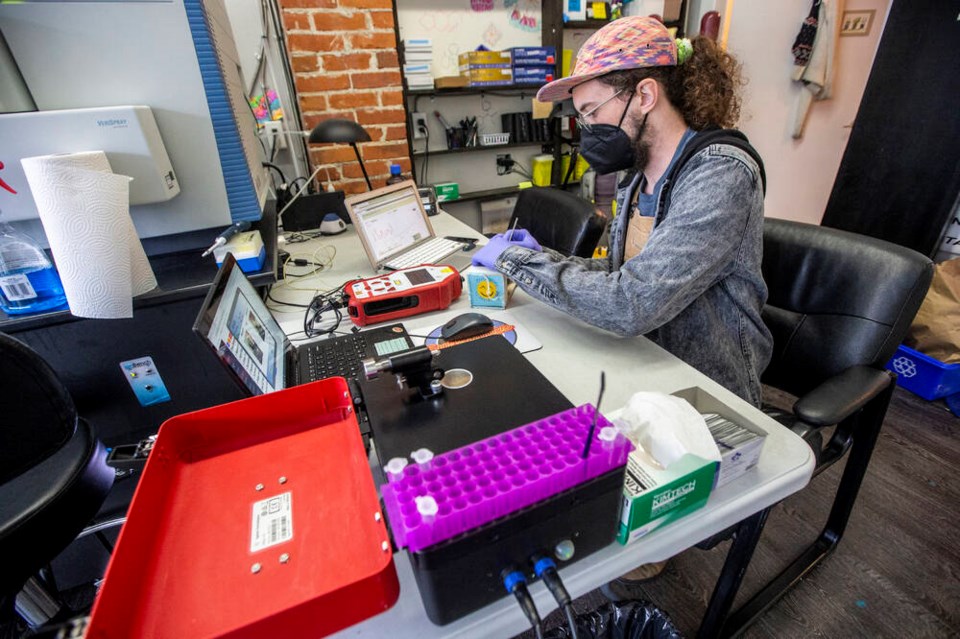Unpredictable potency is one of the biggest threats in the overdose crisis, a Victoria-based drug checking service says.
Substance UVic, which operates the Vancouver Island Drug Checking Project, points to unpredictable fentanyl potency as one of the biggest dangers to the community.
The Vancouver Island Drug Checking Project, a confidential drug-checking program in Victoria’s North Park neighbourhood, releases monthly and weekly data about the samples brought in by service users.
On May 27, in response to an Island Health overdose advisory for the region, Substance UVic said it was seeing a wide range of fentanyl concentration among opioid samples — from one to 30 per cent.
“We’re not seeing any particular bad batch when these overdose advisories being released by Island Health,” said Bruce Wallace, a University of Victoria professor and co-lead for the project. “What we’re reporting is a significantly unpredictable drug supply.”
About half of opioid samples between May 19 and May 26 included Benzodiazepines in addition to fentanyl. “Benzos” — sedatives prescribed to treat depression and anxiety — are particularly dangerous because they don’t respond to Naloxone, the overdose response medication kit that reverses an estimated 2,000 to 4,000 overdoses per month.
The B.C. government released its April overdose statistics on Thursday, renewing calls for immediate provincial action on the health crisis, which kills more British Columbians than homicides, car crashes, suicides and drownings combined.
In April, 15 people died in Victoria from taking illicit drugs — one death every second day of the month.
But death rates aren’t the only indicator of the crisis. Victoria may have seen 127 overdose deaths in 2021, but paramedics responded to 1,952 overdose calls in the city. Those who survive an opioid overdose can suffer brain, heart, liver or kidney damage, as well as a decreased opioid tolerance due to hospitalization or time away from use.
Wallace said the unpredictable content of drug samples make it difficult for people to manage their own harm reduction.
“It’s really hard to be able to predict what the substance is,” he said. “There’s very few examples of substances that people would purchase or use that have no regulation or control.”
It hearkens back to calls for expanded safe supply programs, Wallace said. The Victoria Safer Initiative, launched in 2020, provides pharmaceutical alternatives to toxic and unpredictable street supply. It was one of four B.C. safe supply projects given federal funding last year.
“We need that to be scaled up significantly,” Wallace said.
“We have one of the best examples of how safer supply can be rolled out, and it needs to move from being a pilot project to a full response.”
B.C.’s Chief Coroner Lisa Lapointe echoed that sentiment in the wake of the province’s announcement that it would decriminalize small amounts of hard drugs for three years starting in 2023.
It might help to save lives, Lapointe said, if its paired with regulated safe supply.
Wallace said decriminalization could help reduce barriers to harm reduction, but he was disappointed by the reduced legal amount and the delayed implementation.
“It’s tragic that public health and government are refusing to act in a way that’s responsive,” he said.
“It’s not being implemented in a way that matches the magnitude of the crisis.”
ngrossman@timescolonist.com



